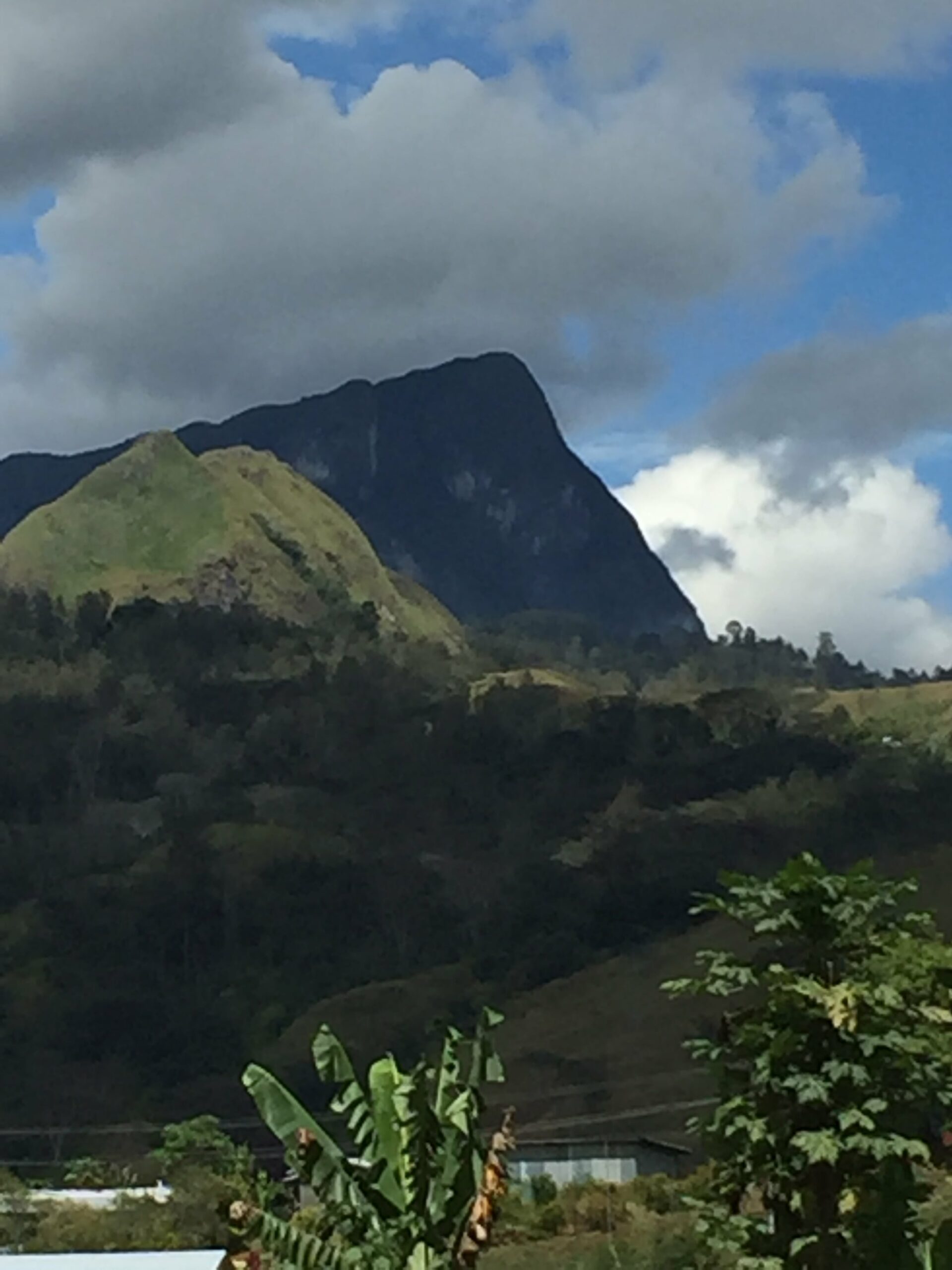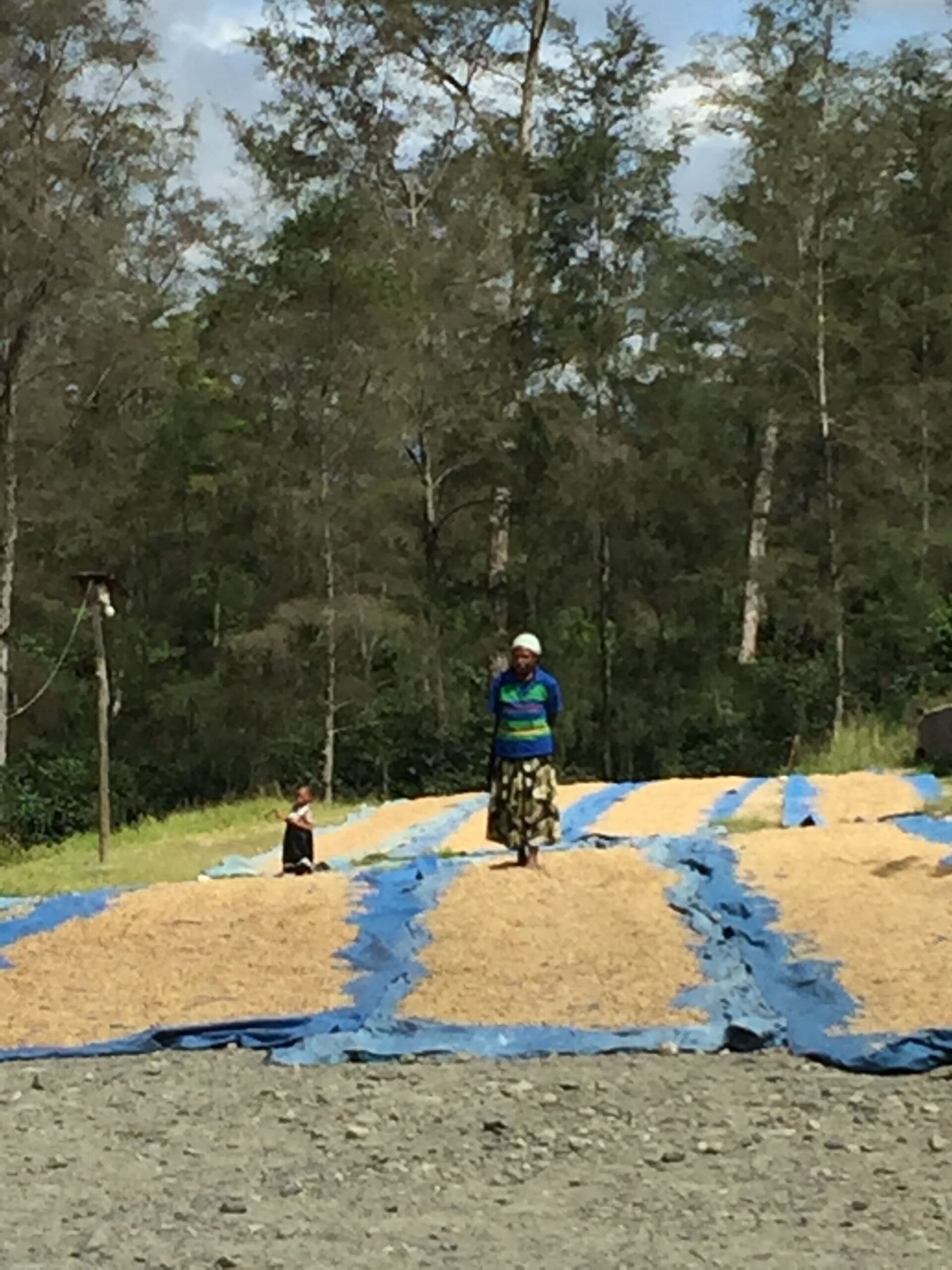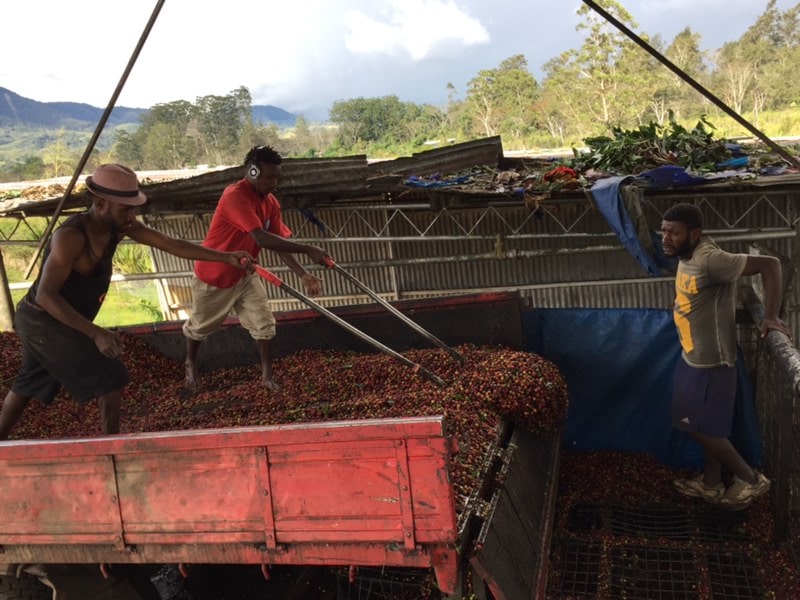The story of coffee in Papua New Guinea is unlike any other origin. Roads are often nonexistent, communities are incredibly remote, and most coffee is grown casually in gardens alongside a family’s food supply. In fact, 99 percent of coffee is grown by individuals with an average farm size of .83 hectares and an average production of 10 bags per year.
Without access to mills, these producers pulp, ferment, wash and dry their own coffee, selling small volumes of parchment. Additionally, due to the extreme lack of access, coffee often makes it to exporters through roadside collections or aggregator pickups. This means the large lots of coffee we see exported are in fact the accumulation of many, untraceable micro-volumes which have been combined for processing.
As exporter, the work of our sister company New Guinea Highlands Coffee Exports (NGHCE) is paramount. Rigorous Quality Control ensures that coffee is separated by size and cup quality. Sometimes this process identifies high-end small lots which are kept separate, as is the case with our Limited Edition offerings. Most of the time it results in larger volumes designated by grade. In the case of Papua New Guinea Grade A, we see a uniform, clean cup with well pronounced acidity and body with rich fragrance and aroma, and a maximum of 10 green defects per kilogram.
Cupping notes: Toffee, vanilla, mango; bright acidity, full body.




